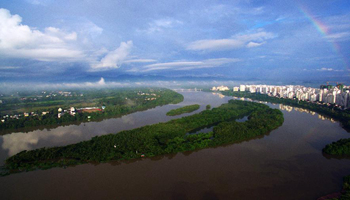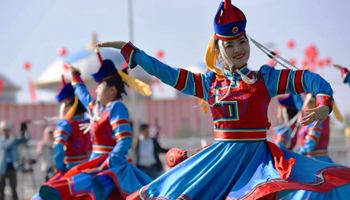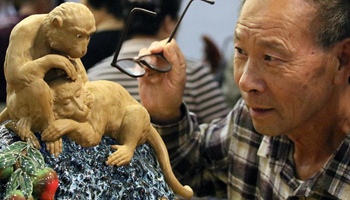BEIJING, Sept. 23 (Xinhua) -- Its mystic appeal has long endured, but what and where is Shangri-la? Laurence Brahm asked such questions during his first search for the lost mythical kingdom in 2002, but the answers he received were confused.
"A grand hotel," said one.
"Paradise," said another.
"A hidden country," tried a third.
Some people even gave Brahm, a lawyer-turned-explorer, a question of their own, "Does it really exist?"
In search of an answer, 41-year-old Brahm and his team set off from Lhasa, capital of southwest China's Tibet Autonomous Region, and headed north to Qinghai Province before finally trekking south through Yunnan Province. But the answers he wanted were nowhere to be found.
Shangri-la was first mentioned in British author James Hilton's 1933 classic novel "Lost Horizon." The allure of a mysterious and isolated place of permanent beauty, harmony, and spiritual resonance, enclosed deep in the Himalayas, as depicted in the book, has for decades inspired many around the world to search and explore, to find if such a place really exists, and where it could be discovered.
Brahm is one of these searchers. He put aside his job as a lawyer, organized a team and launched three expeditions between 2002 and 2004, each lasting about nine months from spring to autumn, to look for clues about Shangri-la.
"I can say no search has ever been as in-depth as ours. We went to places that no foreigner had ever been to before and conducted countless field interviews with living Buddhas, monks, nomads, artists and tourists," Brahm said.
Based on the expeditions, Brahm has written a trilogy of travelogues and made several documentaries. More recently, he put on a multi-media art exhibition, "Searching for Shangri-la", in Beijing to share his stories, findings, thoughts and inspirations.
The exhibition is scheduled to last two months from Sept. 15 to Nov. 15 in the Three Shadows Photography Art Center in Caochangdi, a Beijing art district.
CONTINUOUS QUEST
In their second expedition, Brahm and his team dug deep into the origin of the Shangri-la myth.
After detailed research and analysis of "Lost Horizon," they found that James Hilton had never visited Asia and largely based his writing on botanist and explorer Joseph Rock's reports on western China for the National Geographic.
So in 2003, the team followed the footsteps of Joseph Rock along the ancient Tea Horse Road, which for centuries had served as a trade link between China's Yunnan and Tibet, and several Asian countries, as well as providing a vital route for Buddhism to enter China.
They wanted to find the prototype that had inspired Hilton's Shangri-la, only to discover that Shangri-la was most likely a misspelling of "Shambhala," an ideal realm in Tibetan Buddhism, Brahm said. So the team embarked on a third expedition in 2004 - looking for Shambhala.
During their quest, they heard of the existence of a rare sutra that contained descriptions and prophecies regarding Shambhala and was preserved at Zhaxi Lhunbo Lamasery in Xigaze, Tibet.
Following clues in the sutra, the explorers finally arrived at the ruins of Guge, a powerful ancient kingdom founded around the 9th century that disappeared mysteriously in the 17th century, in Ngari Prefecture, the most isolated part of western Tibet.
Regretfully, Guge was no Shambhala either. But they learned that in a remote part of central Tibet, five to twenty five monks often gather to represent the kings of Shambhala and collectively meditate, visualizing Shambhala.
The practice helped Brahm realize that the search for Shangri-la or Shambhala's actual location was not important. Shambhala was not something to be found; it was something to be created.
SHANGRI-LA TO BE CREATED
According to a prophecy in the sutra, about 2,500 years after the Nirvana of Sakyamuni, founder of Buddhism, the world is destined to enter the Age of Kali, or self-destruction, a time when short-sighted human greed results in vicious cycles of war, poverty and environmental destruction.
Ultimately, the last king of Shambhala dispatches warriors to rid the world of the forces of greed, anger and ignorance, establishing the order of Shambahla on earth.
"Shambhala is basically a balanced and sustainable world that shows respect for nature and for others," Brahm said. "By projecting positive intention to change the circumstances around us, we create Shambhala. It begins with each individual's intention and in the end, it will be our collective intention as individuals that will make a difference."
Though having failed to find the physical place of Shangri-la or Shambhala, it seems that Brahm learned something unexpected on his expeditions, something more meaningful perhaps: that paradise is not some mythical place that does not exist, but Shambhala-like future can be created by humanity through change of perceptions and its actions.










